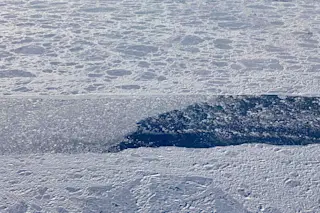Thanks to human-caused warming, an area of ice three times the size of Texas went missing this year.
Arctic sea ice shriveled so much during this summer’s now-finished melt season that it has reached the second lowest extent on record.
A sensitive indicator of human-caused warming, the low extent of the region’s floating lid of ice effectively tied with 2007 and 2016 for second place in satellite records extending back 40 years, according to the National Snow and Ice Data Center.
“Why three ties? It’s probably just blind dumb luck,” says Mark Serreze, Director of the NSIDC. “But clearly the ice is not recovering.”
Sea ice declines during this year’s melt season have continued a long-term trend, as seen in this animation of daily Arctic sea ice extents for 2007, 2012, 2018, and 2019, along with the averages for the 1980s, 1990s, and 2000s. The plot is updated through 9/27/2019. ...














